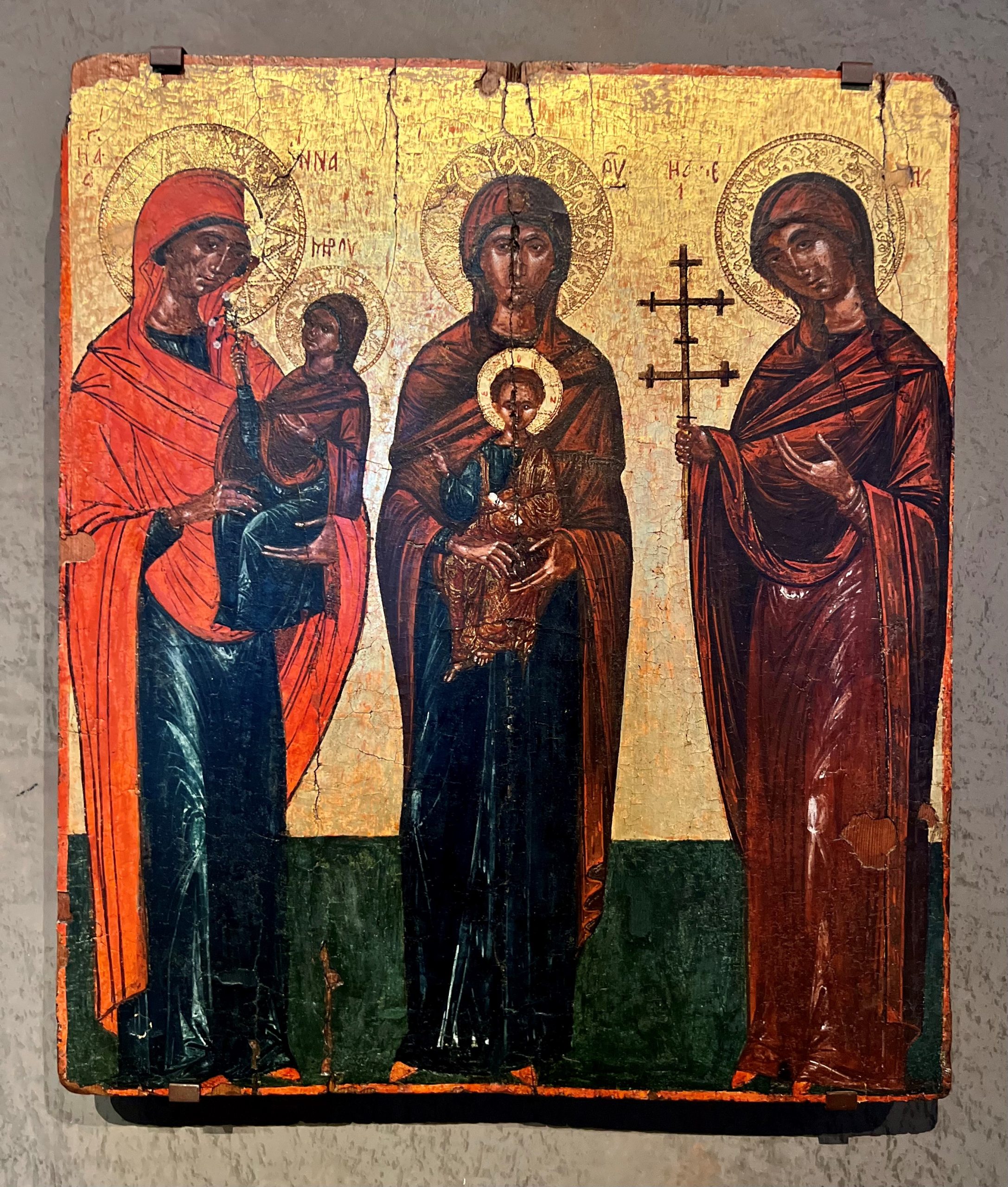Thecla was a first century virgin martyr from Iconium whose story is told in the second century text, The Acts of Paul and Thecla. Like many of the virgin martyrs, she was a noblewoman who refused to be married, thus resulting in her attempted execution. What is unique about Thecla's story, however, is that she was inspired by the teachings of Paul, which led to her conversion and subsequent passion for the Christian mission. Thecla refused to marry her fiancé, Thamryus, and Paul was thrown into prison for spurring up controversy between wives and husbands. In the first failed attempt to execute her, Thecla was sent to be burned at the stake which proves to be unsuccessful. Tryphaena, an important woman of Iconium, cared for Thecla until she is sent to the arena a second time. Though she was given over to the beasts, she miraculously survived all attacks. Even more, she baptized herself in a pool of sea lions and emerged unscathed. She later was reunited with Paul, who empowered her to go forth and teach God's word. She lived out this calling and taught both in Iconium and Seleucia. There are several manuscripts with differing endings to her story, which include her performing healings and teaching to men and women alike. She even escaped rape by a gang of men, and after telling them of God's might, walked through an opening in her cave and was taken up to heaven. It is for this reason that she is seen as a martyr, as she dedicated her life to Christ and died doing so.
Though the historicity of her life is debated by modern scholars, Thecla’s hagiography nonetheless proved to be influential throughout the life of the early church. She is commended for her asceticism seen through the power of her virginity. Her commitment to God’s word and denial of her blood family expanded the vision of God’s family and encouraged persecuted Christians in ancient Rome. Unsurprisingly, there were ancient churches and shrines dedicated to her, and her martyrdom story was told on her feast day in the fourth century. Patristics such as Methodius, Gregory of Nyssa, and Jerome talk of her wisdom and powerful imitation of Christ. Indeed, women alongside men were encouraged to follow in her footsteps.
This icon shows Mary, Anne, and Thecla, together. Anne is depicted holding the Virgin Mary because Orthodox tradition names her as Mary's mother, making Anne the familial grandmother of Jesus. Next to her stands Mary, holding the Christ Child. To the right is Thecla, depicted here holding a Byzantine style cross. All three women are crowned with a circular nimbus, a symbol used in Christian art to depict holiness or spiritual power. Christ is also crowned with a nimbus, and His right hand makes the traditional symbol of His human and divine nature and the unity of the Holy Trinity (two fingers together, with the other fingers touching the thumb to form a circle). In His left hand, Jesus is holding a scroll, which often represents wisdom and knowledge in religious iconography. While Anne and Mary supported and nurtured the Christ Child, this Child holds the authority of Heaven and Earth (Matthew 28:18). Thecla stands as witness to Christ's death on the cross and His resurrection for the salvation of the world.
Sources:
Cohick, Lynn and Amy Brown Hughes, “Thecla: Christian Female Protomartyr and Virgin of the Church,” 1–26. In Christian Women in the Patristic World: Their Influence, Authority, and Legacy in the Second through Fifth Centuries. Grand Rapids: Baker Academic, 2017.
Title of Art: Mary, Anne, Thecla
Subjects: Mary, Mother of God; Anne; Thecla
Ritual Pose/Object: cross
Art Form: Painting
Exhibit Institution: Museum of Byzantine Culture
Exhibit Location: Thessaloniki, Greece
VM Image #: 0101
Photographer: George Kalantzis
Featured on Podcast: Listen to Podcast
Download: 
Full View: 



